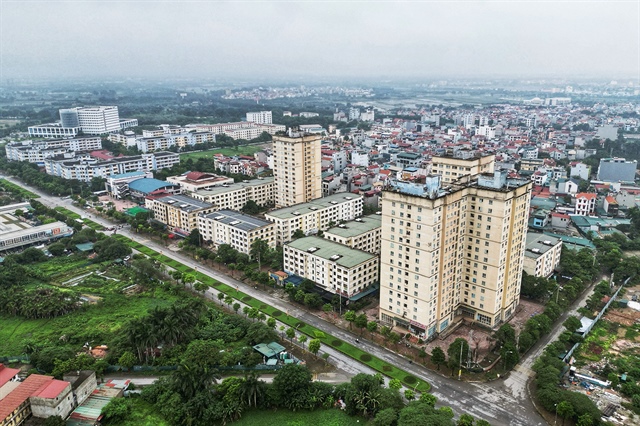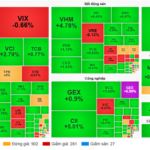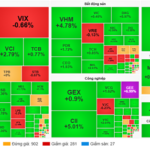What Model Does the State Establish for Real Estate and Land Use Rights Transaction Centers?
In the draft resolution, the Ministry of Construction proposes a policy to enhance transparency in real estate transactions through State-established Real Estate and Land Use Rights Transaction Centers. These centers serve as the central hub for electronic communication among relevant agencies and organizations involved in real estate transactions. Their functions include organizing, supervising, and authenticating real estate transactions, such as buying, selling, transferring, and lease-purchasing properties.
However, the draft resolution does not clarify the organizational model or operational methods of these centers. It remains unclear whether these centers are intended to provide real estate transaction data or function as actual real estate trading platforms. Both models are effective solutions for enhancing market transparency.
If the centers are designed as information providers, the Ministry of Construction already has the Real Estate Information Center under the Department of Housing and Real Estate Market Management. This center is fully equipped to provide market data and information.
Currently, the Ministry of Construction is collaborating with the Ministry of Agriculture and Environment and the Ministry of Public Security to launch a 90-day campaign to clean up land data. The goal is to ensure data inheritance and usage without overlaps or redundancies.
Once the land and real estate database is cleaned, synchronized, and made publicly accessible, it will become an effective tool for the government to manage the real estate market in line with market principles. It will also serve as a market regulation tool to prevent property prices from rising excessively.
This platform will also serve as a trusted source of information for citizens, investors, and businesses, facilitating efficient and secure real estate transactions while preventing illegal activities, fraud, and unreasonable pricing.

The government has implemented several policies to ease restrictions, leading to the launch of numerous social housing projects in 2026. Image credit: Minh Hiền |
To achieve these goals, the Ministry of Construction should develop and operate a unified national real estate data portal. This portal could integrate with other databases managed by land, tax, banking authorities, and private real estate trading platforms.
In the context of the two-tier local government structure, the Ministry of Construction should guide local authorities in establishing and connecting these centers with local public administrative service centers. Data integration should be implemented immediately to address practical challenges and ensure timely solutions.
If the Ministry proposes an online real estate trading platform model, it should first perfect the Real Estate Information Center model mentioned earlier. Only then should it proceed with developing the online trading platform, as its success relies on a large, regularly updated, and authoritative real estate information source.
A robust data foundation is essential for developing a real estate trading platform. It should integrate with electronic notarization systems, banks for cashless payments, tax systems, and treasury systems to automate financial obligations, tax payments, and registration fees, thereby reducing tax evasion in real estate transactions.
This platform will also share land data, planning information, and land use changes with the real estate database, enabling nationwide reference checks. This will build trust and convenience for investors, promote legal transactions, ensure full tax compliance, and minimize risks.
Can Credit Mechanisms Stabilize Property Prices?
In the draft resolution on measures to curb and reduce real estate prices, the Ministry of Construction proposes lending policies for homebuyers. Financial institutions operating in Vietnam would apply lending limits for home purchases, excluding social housing, as follows: up to 50% of the contract value for second home purchases and up to 30% for third or subsequent home purchases.
According to the Law on Real Estate Business and the Law on Credit Institutions, lending limits for homebuyers are determined by financial institutions based on borrowers’ creditworthiness and ability to repay. These institutions must also ensure compliance with the State Bank’s safety standards.
In reality, financial institutions lack tools to quickly and accurately verify borrowers’ ownership of second or subsequent homes nationwide, as Vietnam’s real estate ownership information system remains underdeveloped, as previously discussed.
The draft resolution also includes incentives for investors, granting provincial People’s Committees the authority to allocate at least 20% of planned commercial housing projects for 2026-2030 to develop affordable commercial housing. These projects would be selected without bidding or auction processes.
Is this a feasible policy for developing affordable commercial housing? Implementing this regulation could create inequality among commercial and social housing investors, particularly those who invested before the resolution’s issuance and are preparing to supply the market.
Recently, the National Assembly and the Government have implemented several policies to ease restrictions on social housing projects. As a result, numerous social housing projects for low-income individuals will be launched in 2026 across various localities. There is even a risk that the market may not fully absorb the supply of social housing, which is priced 70-90% lower than commercial housing.
Therefore, proposing additional incentives for affordable commercial housing development may overlap with existing policy objectives. Essentially, commercial housing prices are determined by market supply and demand, and administrative interventions to lower prices are unnecessary.
Credit Debt Trap: Buyers at a Disadvantage, Risk of Price Bubbles
The current Law on Real Estate Business requires future real estate sales to follow a payment schedule (up to 30% of the contract value upon initial payment, up to 50% before handover, and up to 95% before receiving the ownership certificate). However, enforcement of these regulations remains lax.
Most large-scale real estate projects collaborate with banks to offer substantial loans, sometimes up to 70-80% of the property value with 0% interest for 1-2 years. This creates a psychological trap of perceived affordability, as the actual cost is often inflated by 5-10% compared to the original price. This encourages buyers to use credit packages, leading to price bubbles. This is a primary reason for the high real estate credit ratio in banks. By the end of July 2025, total real estate credit debt exceeded 4.1 trillion VND, accounting for approximately 24% of the banking system’s total debt. Some banks, like Techcombank, have real estate credit ratios exceeding 30%.
In large real estate projects, developers do not sell directly but rely on real estate agencies and intermediary companies within their ecosystem, sometimes involving multiple layers of intermediaries (F1, F2, F3) with high discount rates ranging from 10-20%.
Each intermediary layer employs various tactics, such as inflating listing prices, conducting fake transactions (internal deposits) to manipulate prices, launching multiple sales phases with increasing prices, and spreading planning information.
Sales campaigns are professionally organized and marketed to create a sense of urgency (“buy now before it’s too late”). Banks often overvalue properties to help buyers access loans, stimulating demand. This approach allows banks to quickly increase credit debt targets, generating significant profits from real estate credit. However, when the market declines, buyers suffer as their collateral loses value, turning them into bank debtors.
To fundamentally control commercial real estate prices, authorities should implement policies to regulate supply in line with market realities, preventing intermediaries from excessively inflating prices.
The Law on Real Estate Business mandates developers to disclose information on the Department of Construction’s website, but this is not strictly enforced or regularly updated, and there are no penalties for non-compliance. Mechanisms should be established to require developers to provide transparent information on a unified Ministry of Construction platform regarding project legality, progress, product quality, transaction conditions, costs, and distribution prices.
In cases of abnormal price increases, authorities should promptly inspect and monitor to prevent interest groups from exploiting policies.
The real estate market’s inefficiencies have persisted for years without effective regulatory mechanisms. Given the trillions in profits generated from these policy loopholes, authorities must implement solutions and sanctions to regulate the market, particularly for future real estate transactions.
However, direct administrative interventions should be minimized in favor of risk prevention measures to avoid subjective factors leading to real estate bubbles, which could have cascading effects on other sectors and destabilize the economy.
Lê Quang Minh
– 15:15 10/10/2025
Building a Solid Foundation for Long-Term Growth: Phát Đạt’s Strategic Priority
Anticipated Q3/2025 business results indicate that Phat Dat Real Estate Development Corporation (HOSE: PDR) is beginning to accelerate. While the pace isn’t as rapid as market pressures or Phat Dat’s own expectations demand, it clearly reflects the sustainability of the company’s long-term strategic plan.
Market Pulse 10/10: VHM & VIC Lead the Charge, VN-Index Surges Over 31 Points
At the close of trading, the VN-Index surged by 31.08 points (+1.81%), reaching 1,747.55 points, while the HNX-Index dipped by 1.32 points (-0.48%), settling at 273.62 points. Market breadth favored the bulls, with 405 gainers outpacing 310 decliners. The VN30 basket mirrored this trend, boasting 22 advancers, 5 decliners, and 3 unchanged stocks.
Market Pulse 10/10: Widespread Green Dominance Sustained
The green hue maintained its dominance throughout the morning session. At the mid-session break, the VN-Index climbed over 15 points (+0.89%), reaching 1,731.73 points. Meanwhile, the HNX-Index experienced a slight dip, hovering just above the reference mark at 274.89 points. Market breadth favored the buyers, with 390 stocks advancing and 308 declining.
Hanoi Unveils New Development Plans for Prime 11-Hectare Land at 233, 233B, and 235 Nguyen Trai Street
After 11 years of anticipation, Hanoi has officially reclaimed the prime 11-hectare plot at 233, 233B, and 235 Nguyen Trai, paving the way for its transformation into a sprawling urban development by a leading enterprise.













































